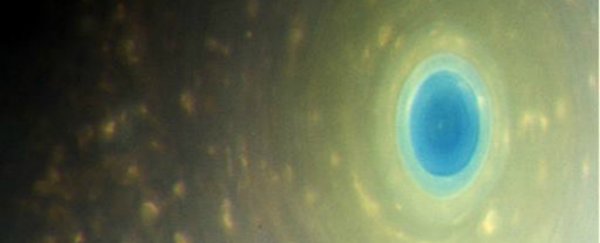Scientists just got their first glimpse into the space between Saturn and its rings. And it's pretty stunning.
On Wednesday, the NASA space probe Cassini performed the first of 22 planned dives through the rings around the planet.
No human-made object had ever ventured so far into those swirling bands of ice and dust particles.
 NASA/JPL-Caltech/Space Science Institute
NASA/JPL-Caltech/Space Science Institute
Cassini was traveling at speeds of 77,000 mph through regions thick with potentially destructive particles. It had to use its dish-shaped antenna as a shield, preventing any communication with Earth during the dive.
 NASA/JPL-Caltech/Space Science Institute
NASA/JPL-Caltech/Space Science Institute
 NASA/JPL-Caltech/Space Science Institute
NASA/JPL-Caltech/Space Science Institute
All day, scientists anxiously awaited confirmation that their brave little space robot had made it through.
Just before midnight Pacific time, the Deep Space Network (a group of telescopes that communicate with distant objects in space) picked up Cassini's far-off signal.
 NASA/JPL-Caltech/Space Science Institute
NASA/JPL-Caltech/Space Science Institute
A massive cheer went up at ground control at the Jet Propulsion Laboratory in Pasadena, California, as data began streaming the billion miles back to Earth. Cassini had made it through the gap and emerged safely on the other side.
We did it! Cassini is in contact with Earth and sending back data after a successful dive through the gap between Saturn and its rings. pic.twitter.com/cej1yO7T6a
— NASA Solar System (@NASASolarSystem) April 27, 2017
In September, the spacecraft's last dive will have it plummeting straight into Saturn itself, and the probe will be lost forever. But until then, Cassini's 'grand finale' promises to deliver some incredible images and some fascinating science.
The raw images from the latest dive are being posted on NASA's website as they stream in. Here's some of what Cassini has seen:
 NASA/JPL-Caltech/Space Science Institute
NASA/JPL-Caltech/Space Science Institute
 NASA/JPL-Caltech/Space Science Institute
NASA/JPL-Caltech/Space Science Institute
 NASA/JPL-Caltech/Space Science Institute
NASA/JPL-Caltech/Space Science Institute
 NASA/JPL-Caltech/Space Science Institute
NASA/JPL-Caltech/Space Science Institute
 NASA/JPL-Caltech/Space Science Institute
NASA/JPL-Caltech/Space Science Institute
 NASA/JPL-Caltech/Space Science Institute
NASA/JPL-Caltech/Space Science Institute
 NASA/JPL-Caltech/Space Science Institute
NASA/JPL-Caltech/Space Science Institute
 NASA/JPL-Caltech/Space Science Institute
NASA/JPL-Caltech/Space Science Institute
2017 © Washington Post
This article was originally published by the Washington Post.
Update 30 April 2017: ScienceAlert added a header image for this story without properly crediting the photographer, astroparticle physicist Sophia Nasr. We apologise for the error and have amended the credit now. Properly attributing scientists and aritsts is one of our site's core values and we're investigating what went wrong in this situation.
